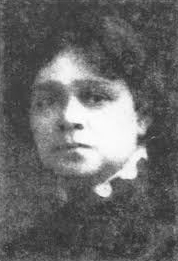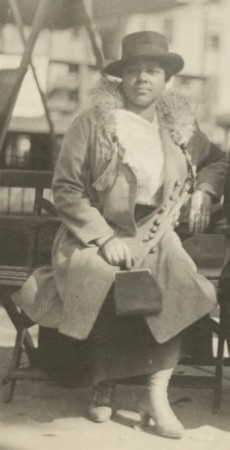Left Behind: Minority Women and the Vote
The first Wilton Equal Franchise League suffrage fair in 1912 featured an auction, live music, Japanese lanterns, a circus, and speeches by local suffragists. There was also a white barker in blackface soliciting ten-cent donations to view a faux freakshow. A Norwalk Hour article reported approvingly on the Japanese lanterns as well as the blackface, and on the live music and the freakshow. It did not condemn or even recognize the racism or ableism of these acts. And there is no evidence to suggest the suffragists responsible for the fair, much less the area residents who attended, perceived anything wrong, either. The fair’s earnings supported a trolley campaign of suffragists in New London County. But at what cost did these funds come?
While the origins of the women’s movement are closely tied to the fight against slavery, and many early suffragists were equally abolitionists, the 15th amendment led many white suffragists to turn against African American interests, exposing their racism. With the amendment, African American men gained the vote, but women regardless of race did not. Rather than celebrating this as a major advance in human rights, Anna Howard Shaw, president of the National Woman Suffrage Association, condemned lawmakers who had “put the ballot in the hands of your Black men, thus making them political superiors of White women. Never before in the history of the world have men made former slaves the political masters of their former mistresses!” Racial stereotypes portrayed African American men as sexual predators, violent, and animalistic. What could the nation’s supposedly refined and chaste white women expect at their hands?
The suffrage movement in the 1910s did little to help either. As president of the National American Woman Suffrage Association, Carrie Chapman Catt argued before Southern audiences that “White supremacy will be strengthened, not weakened, by women’s suffrage.” However, she elsewhere declared “there will never be a true democracy until every law-abiding adult in it, without regard to race, sex, color or creed has his or her own inalienable and unpurchaseable voice in government.” At best, Catt was willing to compromise her message to suit the biases of her audience and her own self-interest. Alice Paul, leader of the National Woman’s Party, likewise reassured Southern women – and no doubt many Northerners – that “we are organizing the white women” not “the negresses.”
African American women had to fight gender as well as racial discrimination in Connecticut and beyond. Mary Townsend Seymour, an African American suffragist and labor activist from Connecticut, assessed white Connecticut suffragists in a report to the NAACP in 1919. Josephine Bennett did not sacrifice African American interests in pursuit of suffrage, but Katherine Houghton Hepburn, while “very democratic in some things” was “not to be trusted too far on the Negro question.”
We don’t know who approved blackface at Wilton’s suffrage fair in 1912. Such performances were common, particularly as minstrel show fundraisers for various causes. Town newcomer Grace Knight Schenck was president of the Wilton Equal Franchise League that year and must bear some of the responsibility. The only other evidence we have of Grace’s attitudes towards race comes from 1918 when she was Chairman of the Connecticut branch of the Woman’s Land Army of America. In a letter she wrote about the town of New Milford rejecting a unit of Jewish workers, Grace said “It is dreadful to have everyone dislike you just because the Stork dropped you down a Hebraic chimney or you have skin of a yellow or black shade. I don’t believe it is right but it is a very real fact.”
Even the 19th amendment failed to deliver equal voting rights to all women, regardless of race. Classified as non-citizens, Native American women were left behind and had to wait another four years before they, too, could vote. Voter intimidation and poll taxes suppressed African American women’s turnout. And disenfranchisement continues today in U.S. territories like American Samoa and Puerto Rico. As far as we have come, there is always further to go.



